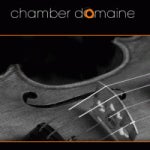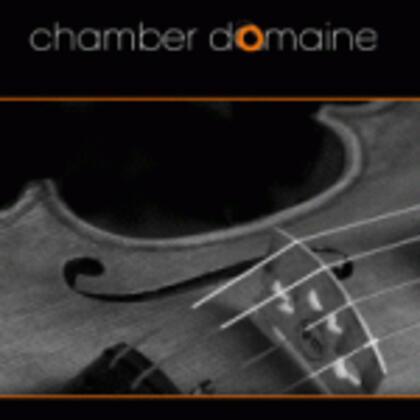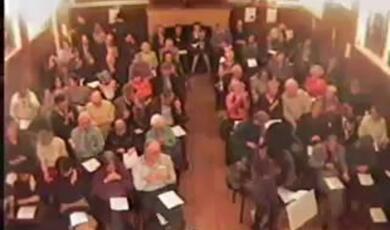Haydn in London - The Enlightenment and Revolution
Share
- Details
- Transcript
- Audio
- Downloads
- Extra Reading
Haydn was the most famous composer of his day. By the time he visited London in 1791-95, he was a celebrity courted by the monarchy and his music was widely performed at concerts and in the home. This concert will look at the evolution of his style and explore the influence of the Enlightenment and the tumultuous social and cultural changes that were taken place in Europe during his lifetime. The concert traces the development of music from the high baroque through to the classical style. Works by Handel, Bach, Hadyn and Beethoven will be performed.
2009 marks the 200th anniversary of Haydn's death and this event is part of the series of concerts that puts his fantastic instrumental chamber music and song into its social and cultural context. Each concert will be proceeded by a talk by Thomas Kemp, the artistic director of Chamber Domaine, recently praised in The Guardianfor its "dynamic commitment and high virtuosity. A breath of fresh air."
The pieces performed were:
Bach - Cello Suite in G Major, BWV 1007
Prelude
Allemande
Courante
Sarabande
Minuets
Gigue
Handel - Sonata in D major, HWV 371 for violin and continuo
Affetuoso
Allegro
Larghetto
Allegro
Beethoven - Piano Sonata No. 8 Op. 13 in C minor - "Pathétique"
Grave - Allegro di molto e con brio
Adagio cantabile
Rondo: Allegro
Haydn - Piano Trio in E flat No. 15 - "Jacob's Dream"
Andante cantabile
Allegro - Jacob's Dream
The other concerts in the series Haydn in London include:
The Revolutionary Drawing Room
London: The place to be seen and heard
Papa Haydn or Genial Revolutionary?
Download Transcript
HAYDN IN LONDON -
THE ENLIGHTENMENT AND REVOLUTION
Thomas Kemp
Tonight's event is part of a series of concerts we are giving, based around Haydn's visits to London between 1791-92 and 1793-1794.
To put it into some kind of context, Haydn made so much money while he was in London performing and playing his music, that it was the equivalent to twenty years of his salary as a court composer in Esterhazy. After those few years in London, he had made a phenomenal amount of money and was able to buy his first house in Vienna when he went back home.
Haydn was born in 1732 to a poor family of German ancestry. They were all quite musical, and Haydn showed a lot of promise as a youngster. At the age of five he became a chorister at St Stephen's Cathedral in Vienna, which was very close to where Mozart was to spend his last days, in a flat which basically is adjacent to the Cathedral. Haydn was a chorister there until he was 17, when his voice broke, which was quite a late stage. But by that age he was already a very accomplished pianist, and for the next decade, he earned his living teaching music in the city and freelancing. At this time he was also the personal servant of a an Italian operatic composer called Porpora, who we will come back to later on.
Haydn's period as a freelancer was not altogether very satisfactory. He did not earn very much money and he quite unhappy, but he eventually got some commissions and this led to him being appointed to the court at Esterhazy, where the Princes were incredibly enlightened and very much into music. It was here, in sort of isolation, that Haydn was to spend thirty years or so of his career, basically transforming music from the high baroque, which was the music that he would have sang as a chorister, through to something that very much reflects the beginning of the romantic movement towards the end of his life when he died in 1809. So next year is actually the bicentenary of Haydn's death, so hopefully there will be lots of concerts with Haydn in.
When he moved to Esterhazy, he was sort of in isolation. He was able to compose basically what he liked outside of what he had to write for the court, for which he wrote masses, string quartets and pieces for orchestra. He conducted and performed a lot there, but Haydn was very clever, and he realised that by selling his music, particularly chamber music, to lots of different publishers, he was able to make a bit of extra money on top of his rather basic salary that he received as a court musician. This was to stand him in immense stead because things like his Opus 20 String Quarter and Opus 50 String Quartet and his early symphonies became played all over Europe. So when the situation changed in Esterhazy and the Princes decided that they no longer wanted a court orchestra, Haydn was able to accept an invitation to come to London by a man called Salomon, who was a violinist here.
When he arrived in London, he was actually a celebrity, and the King, the Princes and the aristocracy all wanted a slice of the action. Therefore, Haydn held concerts at the Hanover Square Rooms and also at the King's Theatre and they were completely sold out. He was also able to write new material - new symphonies, new chamber music - for the audiences here, who avidly devoured this new type of music. This whole period that he spent here was perhaps one of the happiest times of his life.
On New Year's Day in 1791 he arrived in London and shortly afterward he wrote a letter to his wife which shows that nothing much has changed in 200 years:
"The sea crossing was terrible and the journey to London was even worse. The food was execrable and extremely expensive."
So when Haydn arrived, he was feted as a composer and as a celebrity. Much of his music was played by people in their homes - the string quartets, the piano trios. The idea of public concerts had already begun in London before his arrival. When Handel was here eighty years before, he had moved to London for precisely the same reasons: you could make serious money as a classical musician, particularly if you were foreign. So Haydn very much fitted into that role.
When he arrived in 1791 he went to a commemoration concert at Westminster Abbey, where they performed Handel's Messiah. This was a very moving event for Haydn. He wrote about it and he decided that he would actually use the libretto that Handel had looked at towards the end of his life for the oratorio "The Creation" - one of Haydn's greatest oratorios - which was written when he returned to Vienna in the late 1700s. This was inspired directly by that concert in 1791.
1791 is also a significant year because while he was here, he heard that his dear friend, Mozart, had died in Vienna. The connection between Mozart and Haydn is a long and fruitful one. They were close friends. Haydn's style of music was incredibly influential on composers like Mozart, but particularly on Beethoven, and I will come back to that later on with the music that we are performing this evening.
Beethoven actually studied with Haydn in the period between his two visits to London. It did not go very well, and Beethoven was, by all accounts, a very difficult pupil to teach. It is well documented that he only had a few lessons before they decided to respect each other but not go any further with the lessons. But to show the kind of respect that Beethoven held Haydn in, he dedicated his Opus 2 Piano Sonatas to Haydn. Also, the early style of Beethoven is so massively influenced by the musical achievements that Haydn had managed to create, from basically a high baroque style, in his early pieces, to something that is much more radical and very much connected with the Enlightenment.
The whole idea of the Enlightenment was a move towards rationality and placing thought and logical thinking before emotion, in some respects. This makes Haydn's approach to music very interesting.
When you listen to the Bach Suite, which is the first piece in this programme, you will effectively hear a series of dance movements. Each movement is one type of music. First there is a prelude, where the cello is playing like an Alberti style bass figure for the whole of the piece; and there is a harmonic development throughout the piece, but essentially, it goes through a few keys and ends back at the tonic home key. In the dance movements, each dance is characterised by the prevailing style, and in this case, it is the French style of baroque. So you have two parts to each movement, and the character of each movement is distinct. There is no development of the actual fundamental style of the music within each movement. There is harmonic development, but it is very clear the character of each individual movement. I think the fundamental difference between this type of music, and indeed with the Handel Sonata that you will hear, is that Haydn is basically taking bits of this style and putting it together in one piece, or in one movement of a piece.
So when you listen to the Haydn Piano Trio, you will hear things that you will hear in the baroque music: some of the patterns might be used as an accompaniment figure; you might hear some trills or a turn of phrase that could be in a piece by Handel. But what Haydn is doing with it is he is creating a kind of dialectic out of this material. So rather than having a form that is pre-described, like you would have in a baroque suite - for instance in a gigue, where you have two halves and you go to the dominant and then back to the tonic - what Haydn is doing is he is able to string a form out of the material, so the form is actually generated by the content of the music rather than the other way around.
In the piano trio, which was written in 1795, it is quite a quirky piece. It is in E Flat Minor, and this brings out another aspect of Haydn's character. E Flat Minor has six flats. Now, if you were at home sitting in front of a music score and you saw six flats, you would completely surprised, because it is very difficult to do, which is such a great contrast to something written in C Major which does not have any sharps or flats. So this is an element of Haydn's style: what he is doing is subtly having a little joke about keys with his audience, who would have been people that played chamber music for fun, connoisseurs perhaps.
You will hear that this particular piece, in the first opening phrase, has a very baroque-like ornamentation, and also, in the second movement, lots of quite florid writing that would not be out of place in, for instance, an opera by Handel. But the difference is that in this music the character is changing all the time. So you will have one type of character, and then another type of character. You might suddenly shift to a different key area, and often Haydn is incredibly daring with the keys that he will take us to, again trying to lead us in the music in a way that is totally different to the music from the baroque era from which he actually came from. You can also hear this use of style in the Beethoven Pathétique piano sonata, which was written two years after the Haydn Trio.
The Pathétique is a very famous sonata, and it begins with the typical baroque opening movement, because the actual opening is a French overture, and the reason why we know this is because French overtures always have dotted rhythms and are quite florid with their ornamentation. So what Beethoven is doing is writing a classical piece, but with baroque elements, but using this as an introduction to something that is quite far removed from, say, Bach or Handel. It is important to recognise that it is Haydn that lays the way open for composers to evolve in this slightly different way, and this is so much linked to this idea of rationalism and Enlightenment thinking.
In some lectures that I gave a few years ago, I talked about the influence of Laurence Sterne on Joseph Haydn, and this is also another part of the Enlightenment. You are not just talking about music; you are talking about an entire culture that is changing in the 18th Century. This is very much linked with the concept of individual liberty; the idea that an individual composer can write music that is not made-to-order; you can be free, you can be more flexible, you can be more creative as an individual in order to express yourself.
This is very important when we look at Beethoven, because the 19thCentury romantic perception of Beethoven is really as the first true creative artist that was free from kind of princely patronage. That is a gross simplification of course, but actually, when you listen to the late Beethoven String Quartets, they are not written to please princes; they are written for, basically, all eternity. They are just great pieces of art; they are not governed by someone's taste. I think it was Mozart who once wrote a piece and someone said, "You've written too many notes." It is that very different kind of attitude to music that Beethoven has and the way that he was perceived, and this is something that Haydn did so much to lay the groundwork for throughout what was then a very long life, by the time he died in 1809, we are already into a period where you are beginning to see the Industrial Revolution evolving. You have gone through a very turbulent political period right across Europe and society is beginning to change by the time you get to 1809.
So, to put it very simply, Haydn's life represents a kind of transition, if you like, from something that is incredibly rooted in 17th Century and early 18th Century music - it is rooted in Italian opera and in baroque forms and style - and what Haydn is doing is he is taking this from that period - his early works are very much in that style - and he is transforming the music to fit along with the prevailing trends that there were in literature, the arts and in politics - in the general social and cultural trends.
To take the example of Laurence Sterne, in Tristram Shandy he makes it very obvious to the reader that they are being taken for a bit of a ride. When you read the book you come across a blank page and you are supposed to draw a picture of the main character. There are chapters that are completely blank, so you are supposed to think, "Oh well, what's that all about?" What he is trying to do is make you very aware of the construction of a book. The actual marble end page is somewhere buried in the middle of the book. Similarly, Haydn is trying to make you aware of how the music is constructed. This is one important element that Haydn managed to put into his music, as he was really the first composer in history to truly understand musical irony. That is something that becomes very profound and significant when you move into the Twentieth Century, with composers like Stravinsky and Ravel. So I think that, in many ways, that is one of his main achievements, and the other is to actually draw on this great pool of knowledge and understanding, that he managed to acquire basically in the middle of the countryside, in this castle. It was not like he could pick up the phone or write to people; it was not very easy, but he was able to assimilate this huge amount of information and knowledge. I think that is why his music is so original and unique; because he was not swayed by other influences, beyond the things that he had grown up with as a young person in Vienna, the high baroque, and he took that and developed it into something very different and rather radical.
So when you listen to tonight's performance, it would be fantastic if you could listen to the baroque pieces and try and find some of the elements that Haydn might use in his Piano Trio. Listen to the ornamentation and to the harmonic language and see how Haydn is able to draw on this and change it in his Piano Trio, or how Beethoven is able to take these earlier models and also transform it into something that is basically verging on the romantic rather than the baroque or classical.
In the other talks that we are going to have later on, we are going to look at what the London concert life was like. London was a very vibrant place, as it is now, particularly today, and what was so interesting about the London of that period is it was the first time really, in the Eighteenth Century, that you saw the emergence of concerts for ordinary people; the public concert. It is for this reason that London was the kind of centre of the emergence of the public concert. In Germany and Austria, in the 1700s, concerts were basically held in princes' castles; they were not for ordinary people. When Haydn came to London, everybody knew who he was, whether you were a road sweeper or a king, and everybody wanted to go and see him play or conduct his piece. That is a very profound transition from what you have earlier, and that basically was the pattern that had been set for hundreds of years before that, and this is an area that we will talk about in the next lecture; about what it was like to go and hear a concert in London, and the type of people that you would meet, and how the whole thing functioned. Basically, it was very much a kind of impresario's buccaneering world, and really, Haydn's visit, and indeed Handel's visit, was a little bit like the Eighteenth Century's X-Factor, because everyone wanted to watch it, even although you might not necessarily like it. So it was extremely popular at the time, which today it is very easy to forget. I actually believe it is still popular, because one of the great things about Haydn, far from being dry and academic, is that he is clever, he is witty, but he is also able to write great melodies and really profoundly move an audience.
©Thomas Kemp, Gresham College, 8 October 2008
This event was on Wed, 08 Oct 2008
Support Gresham
Gresham College has offered an outstanding education to the public free of charge for over 400 years. Today, Gresham plays an important role in fostering a love of learning and a greater understanding of ourselves and the world around us. Your donation will help to widen our reach and to broaden our audience, allowing more people to benefit from a high-quality education from some of the brightest minds.


 Login
Login










